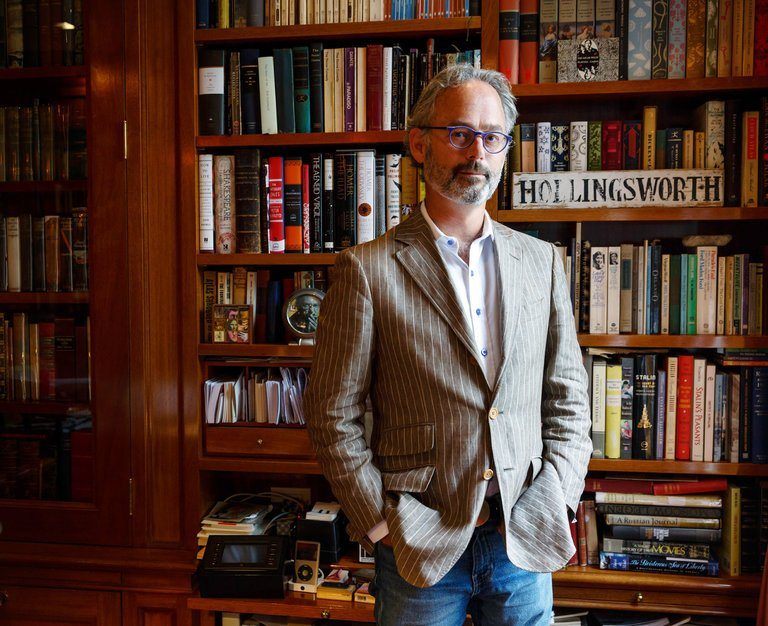
What sort of research did you do for the book?
Rather than pursuing research driven projects, I like to write from areas of existing fascination. Even as young man, I was a fan of the 1920s and 1930s, eagerly reading the novels, watching the movies, and listening to the music of the era. I used this deep-seated familiarity as the foundation for inventing my version of 1938 New York in Rules of Civility. Similarly, I chose to write A Gentleman in Moscow because of my longstanding fascination with Russian literature, culture, and history. Most of the texture of the novel springs from the marriage of my imagination with that interest. For both novels, once I had finished the first draft, I did some applied research in order to fine tune details.
What was the biggest challenge in writing the book?
Initially, I imagined that the central challenge posed by the book was that I was trapping myself, my hero, and my readers in a single building for thirty-two years. But my experience of writing the novel ended up being similar to that of the Count’s experience of house arrest: the hotel kept opening up in front of me to reveal more and more aspects of life.
In the end, a much greater challenge sprang from the novel’s geometry. Essentially, A Gentleman in Moscow takes the shape of a diamond on its side. From the moment the Count passes through the hotel’s revolving doors, the narrative begins opening steadily outward. Over the next two hundred pages detailed descriptions accumulate of people, rooms, objects, memories, and minor events, many of which seem almost incidental. But then, as the book shifts into its second half, the narrative begins to narrow and all of the disparate elements from the first half converge. Bit characters, passing remarks, incidental objects come swirling together and play essential roles in bringing the narrative to its sharply pointed conclusion.
When effective, a book like this can provide a lot of unexpected satisfactions to the reader. The problem is that the plethora of elements in the first half can bog readers down making them so frustrated or bored that they abandon the book. So, my challenge was to craft the story, the point of view, and the language in such a way that readers enjoy the first half and feel compelled to continue despite their uncertainty of where things are headed. Whether or not I succeeded in doing so is up to you.
Does the book have a central theme?
I certainly hope not. In crafting a novel, I do not have an essential message I am trying to communicate. Rather, I hope to create a work of art that, while being satisfyingly cohesive, contains such a richness of images, ideas, and personalities that it can prompt varied responses from reader to reader, and from reading to reading.
In essence, I want to gather together a pile of brightly colored shards of glass. But rather than assemble these shards into a mosaic with a fixed image, I want to drop them into the bottom of a kaleidoscope where, thanks to a glint of sunlight and the interplay of mirrors, they render an intricate beauty which the reader can reconfigure by the slightest turn of the wrist.
Can you describe your process?
My process for writing A Gentleman in Moscow was very similar to my process for writing Rules of Civility. In both cases, I designed the book over a period of years—ultimately generating a outline which detailed the settings, events, and interactions of characters, as well as the evolution of personalities and themes chapter by chapter. Once I’m ready to start writing, my goal is to complete the first draft in a relatively short period of time. Thus I wrote the first draft of Rules of Civility in a year and the first draft of Gentleman in Moscow in eighteen months.
While I’m working on my first draft I don’t share my work. But once I’ve completed that draft, I give it to my wife, my editor in New York, my editor in London, my agent, and four friends on the same day, asking that they give me feedback within three weeks. I then use their varied feedback to begin the revision process. For both books, I revised the initial draft three times from beginning to end over three years.
While I work with a very detailed outline, when the writing is going well it provides me with plenty of surprises. I was in the middle of writing the bouillabaisse scene in A Gentleman in Moscow, for instance, when I discovered that Andrey was a juggler. I was in the middle of drafting Sofia’s fitting, when I discovered (alongside the Count) that Marina had designed a dressless dress. And I was in the midst of the second or third draft when I noticed for the first time that moment in Casablanca when Rick sets upright the toppled cocktail glass.
Source: Amor Towles' official website,September 2017
Submitting this form you agree to receive communications by email and you agree with our Privacy Policy